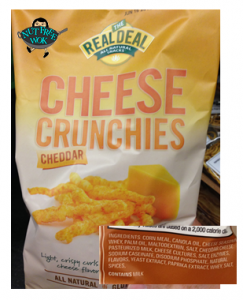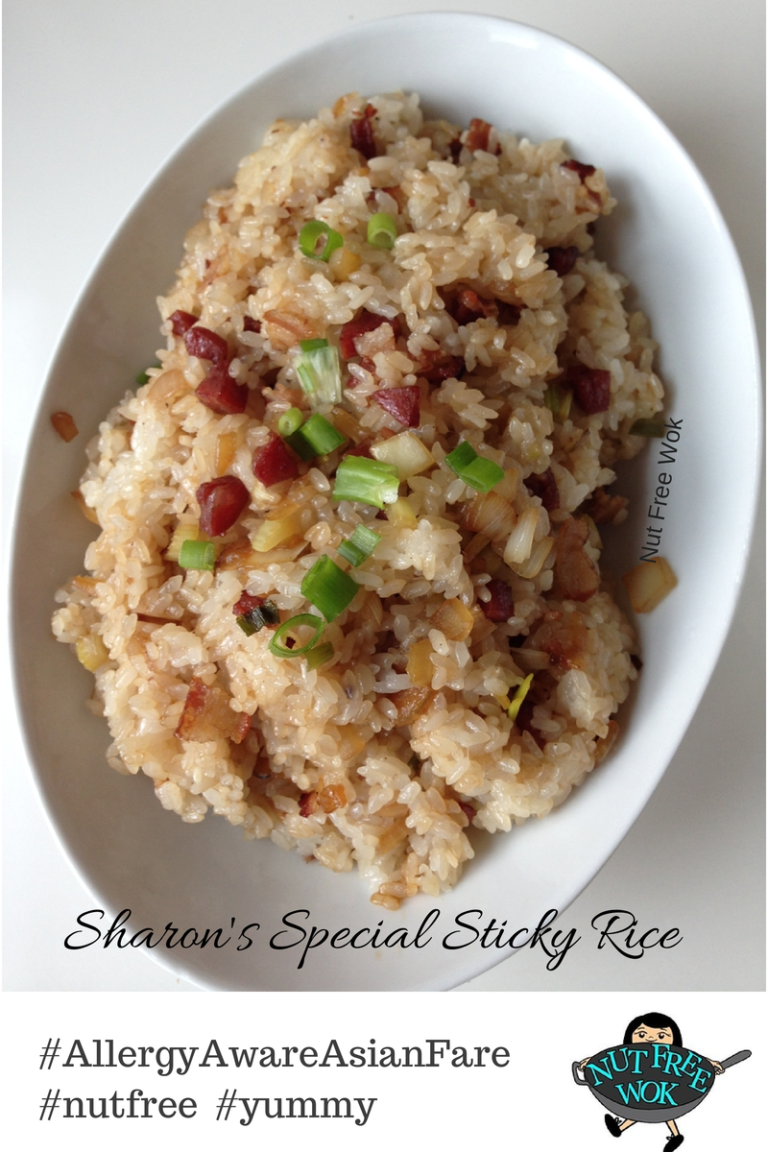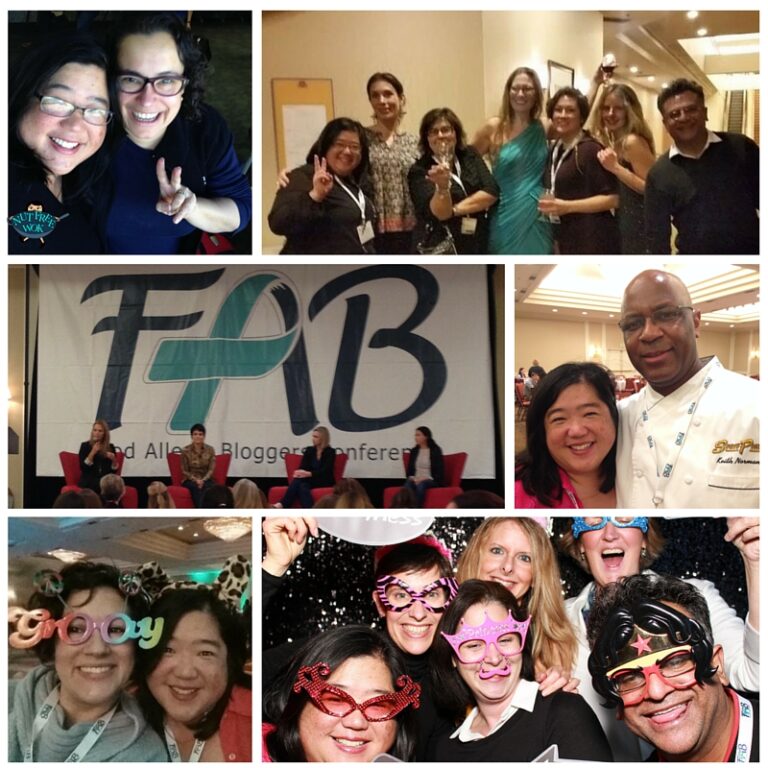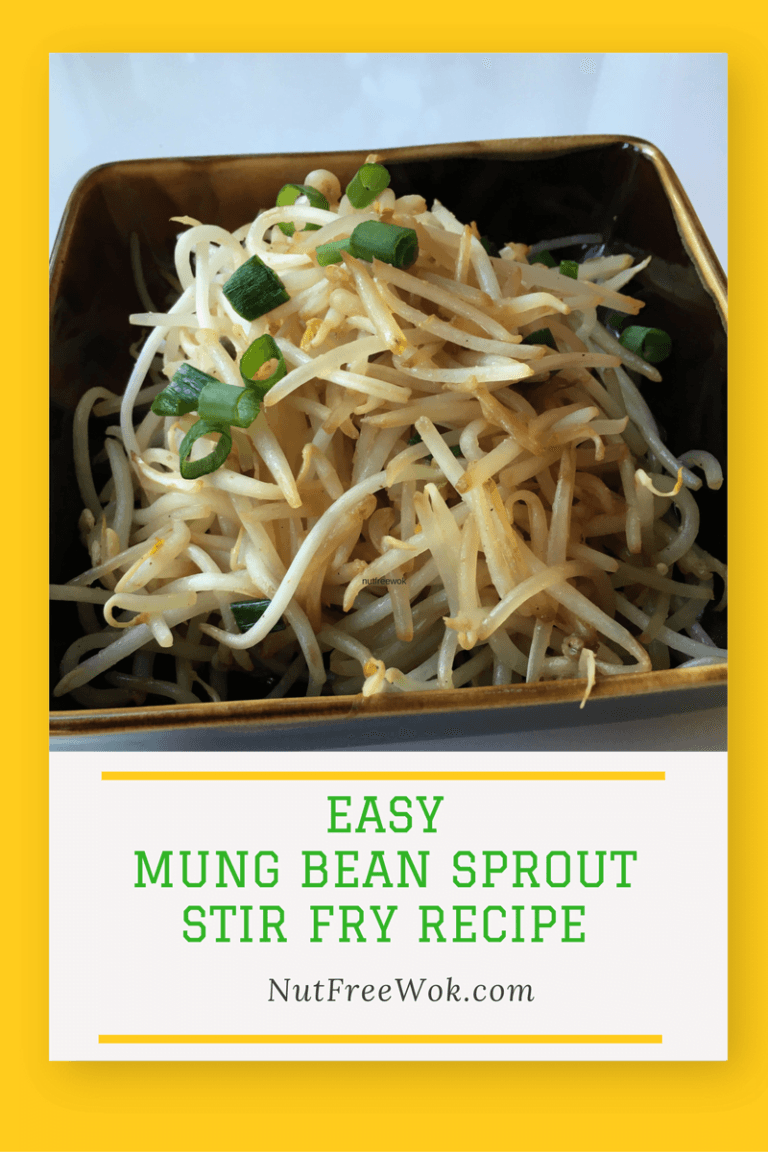
Learn how to make Beef Japchae, a well-known Korean glassy noodle stir fry! It’s a delicious stir fry with sweet potato starch noodles, vegetables, and beef. It’s easy to prepare ahead of time for a quick weeknight supper or potlucks. You can easily adapt the recipe to be vegan, gluten free, or top 9 allergen free.
Disclaimer: Please check that all ingredients are suitable for your allergies and be sure to ask your medical care team regarding any allergy related questions (I do not share medical advice). As an Amazon Associate, I earn from qualifying purchases.
Jump to RecipeWhat is Japchae?
Japchae is a Korean noodle dish made from sweet potatoe starch noodles, vegetables, and meat. It’s delicious and easy to make.
Japchae is one of my favorite dishes. After many years of “please try a bite” my kids now love it too and asked me to make it at home. I recently made it for the first time and because Chef Keith Norman, the food allergy savvy chef at South Point Hotel, saw a photo of my dinner on Facebook, he asked if he could share the recipe at FAACT’s Teen Conference in a cooking demo. He is a treasure to the food allergy community so I have been working hard to support the event.
The sweet potato vermicelli noodles or dangmyeon noodles are flavorful with a slippery but chewy texture. The vegetables taste fresh and tender crisp. The dish tastes hearty with slices of beef but can also be vegan by omitting the beef. It’s a dish that could be prepped or made in advance, making it perfect for a potluck or an easy weeknight meal to reheat and serve. The best thing about learning to make it, is that we can customize it according to our allergies and preferences.

What are sweet potato starch noodles and how do I buy them?
- Sweet potato starch noodles are made from a thick slurry of sweet potato starch extruded into boiling water. The noodles look grey and opaque after they are dried. But when they are cooked, the noodles look transparent and are sometimes referred to as glassy noodles or cellophane noodles because of its appearance.
- Sometimes the noodles are also called vermicelli because of their long slender threads. However it’s important not to confuse them with rice vermicelli or wheat vermicelli which are not cellophane noodles. Sweet potato noodles are usually grey dry noodles in big bulky packages about 12-18 inches in length.
- I felt overwhelmed at a Korean supermarket because they stock at least a dozen different brands of sweet potato noodles. I eventually found a name brand product which I like but the downside is that I haven’t heard back from the Korean company that makes the noodles.
- I also shopped at an Asian market closer to home and they stock just a few different choices of sweet potato starch noodles. The two different distributors, Walong Marketing and Wang Globalnet, were very helpful and confirmed with their manufacturers in Asia that the facilities only make sweet potato noodles.
- In case you do not have an Asian market near you, I also looked at the product availability on Amazon and noticed that the Assi brand of sweet potato noodles are distributed by Rhee Brothers. I have reached out to them about allergen information and they are helpful.

Additional sweet potato noodle buying tips
- Typical ingredients are sweet potato and water, stick to the kind with those two ingredients. Some are made with sodium alginate, which is apparently a bulking agent. Avoid any that mention alum.
- Better quality sweet potato noodles will be lighter in color.
- If you have a choice between buying a small package or a large package, buy the smaller one. Unless the noodles are portioned into smaller bundles it’s hard to use half a package or reseal a large open bag. The first time I made japchae I ended up cooking an entire 1 kilogram bag for that reason.
- 12 ounces dry noodles make 4.5 cups of cooked noodles and with additional ingredients, it will make enough for 4 servings as a main entree or 6-8 servings as a side dish.
Allergy Aware Asian Fare – Beef Japchae Ingredients
Allergy aware Asian fare at Nut Free Wok means that we adapt recipes to make traditional foods allergy-safe to eat. I’m not an expert at Korean cuisine, but I was interested to learn more. Due to our family’s food allergies, I omitted stir fried red bell pepper and shiitake mushroom slices. I used celery instead and included in the recipe notes section on how to use mushrooms and bell peppers. Enjoy!!
Sweet Potato Vermicelli Noodles
- Even though the sweet potato vermicelli noodles are most likely top 9 allergen free, gluten free, and paleo, please read the ingredient list and contact the manufacturer if you are sensitive to cross contact and traces of other allergens. The two products pictured above are made in a sweet potato noodle factory that only handles sweet potatoes.
- If you happen to be allergic to sweet potato, then use a chewy and sturdy noodle that is safe for you. I have some brands that are in my cupboards listed in this post under Asian Noodles.
- I tried Explore Asian’s Edamame and Mung Bean Fettucine (contains soy) as a variation of this recipe and it was good, the pasta has a mild flavor and the texture held up adequately.
- BGreen Foods also has some nice chewy noodles that are free of top 8 allergens (per phone call last year). Results may vary if you don’t use sweet potato noodles, it won’t be japchae but you will still have an allergy safe Asian inspired meal, win-win!
Beef and Vegetables
- The thinly sliced beef that is used for bulgogi is traditional but one could also wrap and freeze a good rib eye or sirloin steak for 30 minutes and then thinly slice it. Or one could use pork or chicken instead or simply omit for a vegan variation.
- This dish uses a lot of colorful vegetables which is perfect for a healthy snack or meal. I learned that it’s traditional to include foods that are green, red, yellow, white, and black. Spinach, carrots, red bell peppers, onions, and shitake mushrooms are typical vegetables for jap chae.

How to Substitute Soy Sauce and Sesame Oil
- Soy sauce and sesame oil are important seasoning ingredients for this dish. Know that results may vary if one omits them or uses a different ingredient. There are lots of great soy sauce alternatives and I have a soy free soy sauce recipe made with beef bouillon that would be great for this dish. I tried using coconut amino to see how it would taste and the resulting dish tasted better with a touch of salt. It also doesn’t look the same as japchae seasoned with soy sauce.
- Toasted sesame oil is much harder to substitute in an allergy friendly way. Nut oils taste similar but are not suitable for a nut free diet!
- The oily top layer of a sunflower seed butter has a similar roasted nutty taste as sesame oil but I think taking the oil out would make the sunflower seed butter difficult to spread.
- I tried a cold-pressed sunflower seed oil, and the taste is too mild tasting.
- I just learned about perilla oil as a substitute for sesame oil. I don’t think perilla oil tastes similar to sesame oil to be a good substitute.

This recipe as written is free of peanuts, tree nuts, dairy, fish, shellfish, and eggs. You can easily adapted this recipe to be free of the top 8 allergens by using a soy free soy sauce or to be wheat and gluten free by using a gluten free tamari soy sauce or other soy sauce alternatives.

Delicious Beef Jap Chae, A Korean Glassy Noodle Stir Fry
Ingredients
- 1/2 pound rib eye or sirloin steak or chicken or pork or omit
- 5 tablespoons soy sauce divided
- 1 teaspoon sugar
- 4 teaspoons sesame oil divided
- 3 stalks scallions chopped (divided)
- 1 clove garlic minced
- 6 ounces baby spinach
- 12 ounces Korean sweet potato noodles
- 2 teaspoons olive oil or any oil of choice
- 1/2 medium onion thinly sliced
- 2 stalks celery sliced
- 2 medium carrots use a vegetable peeler to make ribbons
- 1 tablespoon sugar
- 1 teaspoon sesame seeds, toasted for garnish, optional
Instructions
- Pat dry steak with a paper towel, place the steak in a freezer bag, and freeze for 30 minutes to firm it up.
- Remove the meat from the freezer bag and thinly slice against the grain, transfer to a mixing bowl.
- Marinate the meat with 2 tablespoons soy sauce, 1 teaspoon sugar, 1 teaspoon sesame oil, minced garlic, and a small handful of green onions, mix and marinate for 30 minutes.
- Boil water in a large pot (1/2 to 2/3 full) and blanch spinach for 30 seconds. Use a slotted spoon to take the spinach out of the hot water and rinse under cold running water in a colander. Gently squeeze out excess water and transfer to a small bowl, add 1 teaspoon sesame oil, a pinch of salt, mix and set aside.
- Add sweet potato noodles to the boiling water, stir, and cook for 7 minutes or until tender.
- Drain and rinse the noodles in a large colander with cold water.
- Use your hands to pick up a handful of noodles and cut the noodles so that they are about 12 inches long, place in a large mixing bowl.
- Season the noodles with 1 tablespoon soy sauce, 1 teaspoon sesame oil, mix, and set aside (if allergic to sesame oil, use any allergy safe oil to prevent the noodles from sticking).
- Preheat a wok or a large frying pan on medium high heat for a few minutes, the pan is ready when a small splash of water sizzles in the pan.
- Add 1 teaspoon of olive oil in the pan and saute sliced onions until tender, add celery and saute 30 seconds more, set aside.
- Add 1/2 teaspoon of olive oil in the pan and saute the carrot ribbons for 1-2 minutes until tender crisp, set aside.
- Add 1/2 teaspoon of olive oil in the pan and add the beef into the pan, spread it out, and let the beef sear for a minute or two, then stir fry and cooked through, set aside.
- Turn down the heat on the pan to low-medium, add 2 tablespoon soy sauce, 1 tablespoon sugar, and stir to dissolve sugar.
- Add the noodles, meat, and vegetables to the pan and gently stir fry until thoroughly mixed.
- Season to taste with additional soy sauce and drizzle with 1 teaspoon sesame oil, garnish with the rest of the scallions, and sesame seeds if using.
- Serve as a main entree by itself or as a side dish.
Notes
- If using shitake MUSHROOMS, clean 4 mushrooms and remove stem, thinly slice (1/2 cup) and stir fry with the meat.
- If using red BELL PEPPER julienne 1/4 of a bell pepper (1/2 cup) and stir fry with the carrot ribbons.
- Please refer to the blog post about how to substitute for soy, wheat, or sesame allergies.
Nutrition
Related Recipes
Other Korean-inspired recipes that you might consider would be Korean Chapssal Donut Recipe for dessert or a sweet snack.
I also have a simple stir-fry recipe that you can serve as a side dish, Korean Rice Ovalette with Bacon & Baby Greens Stir Fry Recipe.
If you’re looking for other Korean inspired main entrees, you will love my recipe for Korean Style Beef Short Ribs.
Our family also enjoys this Soy Garlic Chicken Drumsticks, a Korean Style and Sesame-Free Recipe for a lighter everyday meal.
Thanks for reading, please help Nut Free Wok!
If you like this post or recipe, please be sure to give a 5 star rating, leave a comment, and share this post! Your support means a lot to me.
Subscribe to Nut Free Wok’s email subscription (be sure to respond to the confirmation email). You will be notified by email next time I publish another post or recipe and I won’t send you spam or share your email address with anyone.
Disclosure/Disclaimer:
I may mention the names of stores and/or brand names of products that I use because readers ask and I share products and sources which I use and think may be helpful to readers, all opinions are my own. Please note that manufacturing practices and ingredients can change at anytime without notice and readers are always responsible for assuring allergen safety before buying or consuming foods. NutFreeWok.com is a participant in the Amazon Services LLC Associates Program, an affiliate advertising program designed to provide a means for sites to earn advertising fees by advertising and linking to Amazon.com. Thank you for reading!







Hi,
Thanks for the detailed insight into sweet potatoe noodles. I recently tried and loved kelp noodles, however I am unable to find a recipe to make it myself from alginate powder. Have you ever come across this and do you know how it is made? I know it is South Korean and called CheonSachae.
I haven’t seen any recipes for making kelp noodles from scratch. I did find a description on wikipedia, “semi-transparent noodles made from the jelly-like extract left after steaming edible kelp” which sounds labor and energy intensive. Good luck!
Hi Karla, there is a lady on You-Tube who has several different kelp noodles recipes using alginate powder, calcium water and a blender. They seem fairly straight forward. The channel is Keto Asian Flavours
Mmm, i love glass noodles so much! This looks like a delicious dish.
Very interesting noodles and this dish looks so delicious and authentic!
I love Japchae so I can’t wait to try your delicious recipe!!! Pinned! 🙂
I love that you used sweet potato starch noodles as they are so versatile and combine well with so many different ingredients. This dish looks delicious…a must-try very soon!
Thanks, Linda! It’s a great dish, easy to make ahead and enjoy later too. 🙂
I would love to try these noodles! I will have to see where to find them here.
I hope you find them, Jennifer! It’s very good but if you can’t find it, you can still enjoy the same flavors using a spaghetti pasta that’s cooked al dente.
Thanks for this wonderful noodle-alternative! We are huge sweet potato fan and the GF option here is especially appealing!
Hi Dan, it took me awhile to work up the courage to try making japchae, so I thought I would share how to make a super easy dish. I think that the sweet potato noodles are also considered paleo friendly too since it’s a grain-free, vegetable based pasta. Win-win!
I’ve never made a Korean dish at home before, this sounds delicious with the sweet potato noodles, I’ll have to give it a try!
Enjoy, this one is super easy to make.
Those noodles sound interesting. I’ve never had them.
Those noodles sound great. I’ll have to check our specialty store here for them. I had never heard of that variety before.
I need to find those sweet potato starch noodles. I’m drooling of this stir-fry dish!
You can find them at a Korean grocery store or a large Asian supermarket in your area. And they’re available online too. 🙂
Omg this looks incredible. I love Korean food so much and jap chae is so good!
I love those sweet potato starch noodles. They absorb flavors so beautifully!
They’re amazing, Sandi! I’m hooked now. 🙂
Your beef japchae dish looks very delicious. I have never had the Korean glass noodles, but they sound wonderful.
Thank you, I hope you enjoy the recipe.
Hi Sharon! This looks delicious! I have never heard of the sweet potato noodles but they sound awesome – I’m always looking for gluten-free noodles.
Hi Sherri, me too! We don’t have to be gluten free, but I do feel better with less gluten in my diet. Enjoy
Hi Sharon,
you have no idea how much I am a Korean food fan. And my bestie is Korean and every now and then she volunteers to come and cook for us. And this is most of the time what she prepares and I love it. Thank you for all the detailed explanation and your photo is absolutely inviting 🙂
You are so lucky to have such a friend, I would want to have a bestie that would cook for me. She could cook anything and I would be happy! LOL, enjoy. 🙂